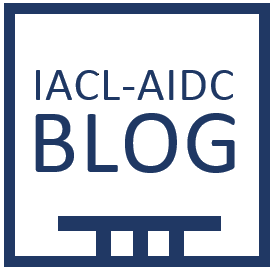Humans and the Rights of Other Animals
/Merris Amos
Queen Mary University of London
Raffael Fasel has written a very well-researched and engaging book on a topic where there is often little agreement and, sadly, little progress in law and policy. Not only has he suggested a way to place the discussion of animal rights on a firmer footing, but he has prompted me, a human rights lawyer, to think more deeply about a number of things.
First, prior to discussing whether animals should be granted human rights, there is a more important question: why do we need to protect the rights of animals? Asking the same question for humans has, of course, myriad answers. Reducing these to the most basic, there are essentially two reasons: for our survival as a species, and for human flourishing. The greatest threats to humans of course remain states and humans themselves. With ongoing wars and human-induced climate change health ever-present threats, these two basic motivations remain.
In relation to the rights of animals, the question is a little more complicated as animals broadly fall into two groups: wild and domesticated animals. For both groups the answer as to why their rights require protection is the same: for survival as a species, and for flourishing – living the best life possible. However, for both groups there is an additional answer connected to human interests. Wild animals need to survive and flourish so that humans can survive and flourish. And, in relation to domestic animals (those who are eaten and those who are exploited in industrial farming), there must be limits to how they are treated and those limits are likely to result in a drastic transformation in this animal population.
Second is the question of how to protect the rights of animals – the subject of this book. For me, in relation to human rights, it is never anything but an aristocratic conception – human rights are only for humans. All humans, between the extremes of life and death, are entitled to full protection of all human rights, universal, inalienable, indivisible. History is replete with horrific examples of deviation from this baseline. Following on from this, for me, animals are not human and therefore do not come within the protection of human rights. But this does not mean that animals must therefore be granted lesser rights and weaker protection.
Animals maintain their own aristocracies and it is not possible to convincingly argue that all animal species are the same. There are species in the wild, albeit a dwindling number, living a better life than we could ever hope to live. Some would argue that animals living in zoos, if they know no other life, are also living a good life. If we were drafting a Universal Declaration of Animal Rights, I think we could agree on some basic universal, inalienable and indivisible rights for all animals including the prohibition of torture and inhuman or degrading treatment; and for wild animals, a right to protection of habitat and way of life.
In addition to this, Fasel is right to conclude that further rights should be based on species membership, not individual abilities or interests. No animal should have to pass a test in order to guarantee protection. Nevertheless, there would be considerable difficulties in practice: who decides the limits of a species; how do we distinguish between wild and domesticated animals; what are the limits of the rights; and how to enforce these. It is important to take into account what many states have already achieved in respect of embracing a species membership approach, albeit in terms of duties rather than rights. For example, in the United Kingdom, animals protected, to some extent, by species specific legislation include: wild birds; endangered species (including red squirrels, bats, water voles, sand lizards, natterjack toads); badgers; dolphins; and porpoises. There are laws about the treatment of domestic animals and farm animals although these are, of course, framed as duties. For example, section 4 of the Animal Welfare Act 2006 provides that a person commits an offence if an act of his causes a protected animal (not a wild animal) to suffer.
Finally, it is important to ask if an animal rights framework (universal or species membership-based) is truly effective – or if we are at risk of placing all of our hopes on the protection of animal rights, just as we place all of our hopes on the protection of human rights. Protecting human rights through law, whether that is international law or national law, is often not effective. Should we instead focus on an animal duties framework – both universal duties owed to animals by states, individuals and corporations; and species-specific duties? Animal rights and human rights are often at the forefront of discussion – but we rarely ask ourselves if a rights framework has real value as a tool to compel action. Perhaps now is the time to consider animal rights and duties to animals side by side in a mutually supportive relationship.
Merris Amos is Professor of Human Rights Law at Queen Mary University of London
Suggested Citation: Merris Amos, ‘Humans and the Rights of Other Animals’ IACL-AIDC Blog (13 February 2025) Humans and the Rights of Other Animals — IACL-IADC Blog






![Xx1088_-_Seoul_city_nightscape_during_1988_Paralympics_-_3b_-_Scan [test].jpg](https://images.squarespace-cdn.com/content/v1/5af3f84a4eddec846552ea29/1527486925632-3VZP3ASLAHP1LJI0D9NJ/Xx1088_-_Seoul_city_nightscape_during_1988_Paralympics_-_3b_-_Scan+%5Btest%5D.jpg)
